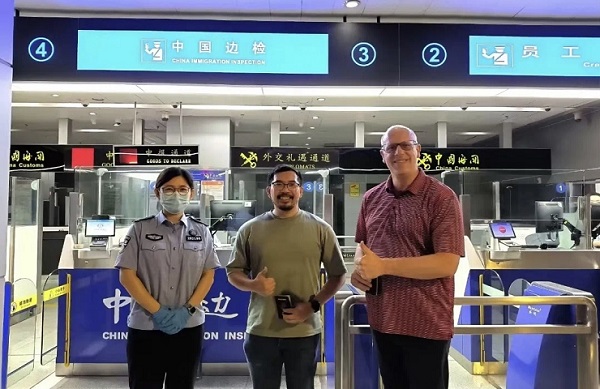

The Nansha Immigration Inspection processes the 144-hour visa-free transit procedures for two eligible foreign passengers.
According to the most recent statistics released by the National Immigration Administration on Aug 19, the number of foreign nationals entering the country through ports from January to July this year reached 17.25 million, marking a significant year-on-year increase of 129.9 percent. The influx of foreign tourists visiting China during this period is anticipated to stimulate consumption exceeding 100 billion yuan ($14 billion).
According to Dai Bin, director of the China Tourism Academy, the significant increase in foreign tourists visiting China is primarily attributed to visa facilitation measures such as the 144-hour transit visa-free policy, unilateral visa exemptions, and mutual visa exemptions.
Furthermore, the ease of foreign card payments in China, the efficient operation of domestic tourism routes, projects, and enterprises, and comprehensive promotional efforts have also influenced the increase in foreign tourist numbers.
A fundamental reason for the surge in foreign tourist arrivals is the country’s growing strength, which entices more foreigners to experience the evolving landscape of China. Hence, the significant growth in foreign tourist arrivals is the collective outcome of multiple contributing factors.
Based on the statistical data, in recent years, shopping has emerged as the primary expenditure for foreign tourists visiting China, constituting approximately 25 percent of their total spending, excluding long-distance transportation costs. Accommodation ranks as the second largest expense, followed by dining. Additional expenses encompass local transportation, entertainment, and communication. In summary, the top three expenditures for foreign tourists in China are shopping, accommodation, and dining.
Following the opening of the country’s borders, essential tasks lie ahead. Discovering and utilizing a wide range of tourism, cultural, and natural resources is essential to creating tailored tourism products. Beyond traditional sightseeing, foreign tourists are intensely interested in immersing themselves in Chinese culture. Effective promotion of these cultural offerings is crucial in establishing dedicated tourism routes and experiential projects that appeal to more international visitors.
